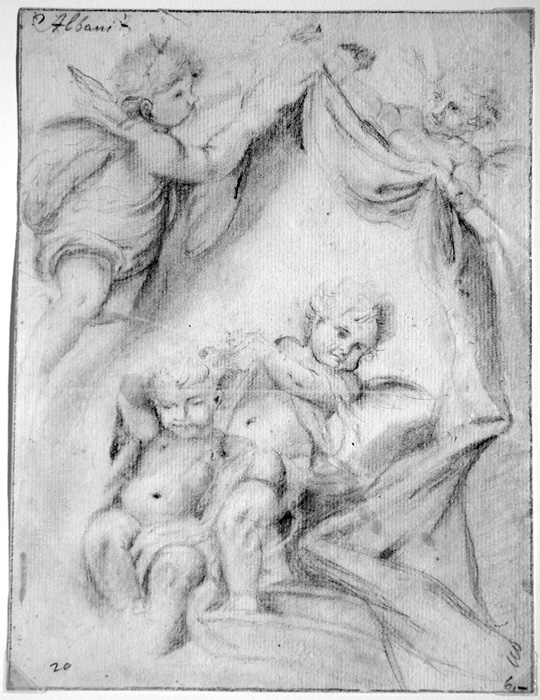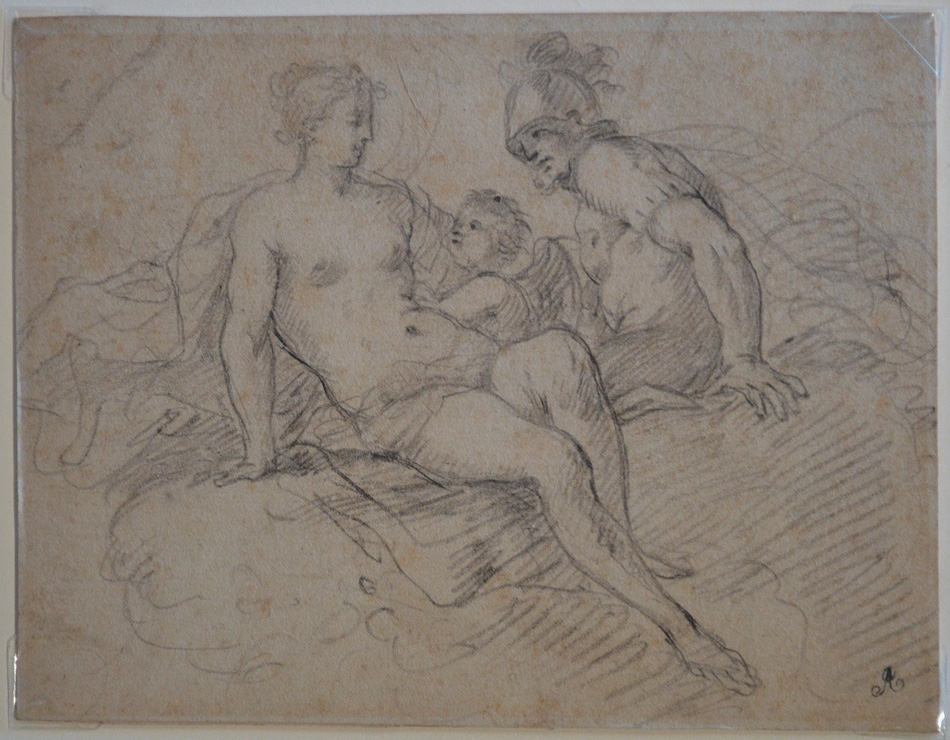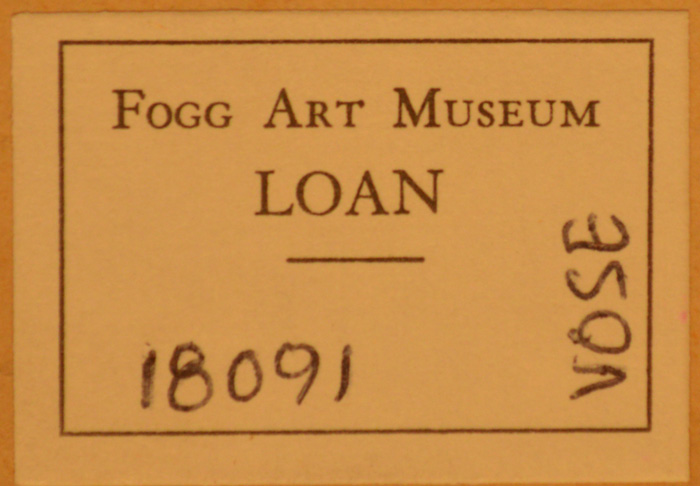Welcome to Spaightwood Galleries, Inc.
120 Main Street, Upton MA 01568-6193
|
|
|
|
Albani's father was a silk merchant who intended to instruct his son in the same trade; but by age twelve, Albani became an apprentice under the competent mannerist painter Denis Calvaert, where he met Guido Reni. Soon he followed Reni to the so-called "Academy" run by the Carracci family: Annibale, Agostino, and Ludovico. This studio fostered the careers of many painters of the Bolognese school, including Domenichino, Massari, Viola, Lanfranco, Giovanni Francesco Grimaldi, Pietro Faccini, Remigio Cantagallina, and Reni.
In the year 1600, Albani moved to Rome to work on the fresco decoration of the gallery of the Palazzo Farnese being completed by the studio of Annibale Carracci under Annibale's direction. Rome, under Clement VIII Aldobrandini(1592-1605) was exhibiting some degree of administrative stability and renewed artistic patronage. While Pope Clement was born from a Florentine family residing in Urbino, his family was allied by marriage to the Emilia-Romagna and the Farnese, since Ranuccio I Farnese, Duke of Parma had married Margherita Aldobrandini. Parma, like Bologna, are part of the Region of Emilia-Romagna. Thus it was no surprise that Cardinal Odoarde Farnese, Ranuccio's brother, chose the Carraccis from Bologna for patronage, thereby establishing Bolognese predominance of Roman fresco painting for nearly two decades. Albani became one of Annibale's most prominent apprentices. Using Annibale's designs and assisted by Lanfranco and Sisto Badalocchio, Albani completed frescoes for the San Diego Chapel in San Giacomo degli Spagnoli between 1602-1607. In 1606-7, Albani completed the frescoes in the Palazzo Mattei di Giove in Rome. He later completed two other frescoes in the same palace, also on the theme of Life of Joseph.
In 1609, he completed the ceiling of a large hall with Fall of Phaeton and Council of the Gods for the Palazzo Giustianini (now Odescalchi) at Bassano (di Sutri) Romano. This work was commissioned by the Marchese Vicenzo Giustiniani, famous for also being patron to Caravaggio. During 1612-14, Albani completed the Choir frescoes at the newly remodeled (by Pietro da Cortona) church of Santa Maria della Pace. In 1616 he painted ceiling frescoes of Apollo and the Seasons at Palazzo Verospi in Via del Corso for the cardinal Fabrizio Verospi.
In 1617 he returned to Bologna and produced altarpieces, allegorical paintings, and idyllic landscapes. In later years, Albani developed a mutual, though respectful, rivalry with the more successful Guido Reni, who was also heavily patronized by the Aldobrandini, and under whom Albani had worked under at the chapel of the Palazzo del Quirinale. Albani never acquired the monumentality or tenebrism that was quaking the contemporary world of painters, and in fact, he is derided often for his lyric, cherubim-filled sweetness, which often has not yet shaken the mannerist elegance. While Albani's thematic would have appealed to Poussin, he lacked the Frenchman's muscular drama. Yet his paintings on mythological and poetic subjects have a sweetness and charm that makes his success completely understandable.
Selected Biblography: The standard study in English is Catherine Puglisi, Francesco Albani (New Haven: Yale University Press, 1999). Also of interest: Elena Rossoni, Francesco Albani a San Giovanni in Persiceto (Bologna: Minerva Edizioni, 2005 and sections in the standard histories of 17th-century Italian art.
|
|
|
|
|
Venus, Cupid, and Mars. Black chalk on paper laid down on 2-ply board. Venus reclines on a cloud with Cupid reaching out to her while Mars, helmet still on, watches. Several small stains. The collctor's mark of John Auldjo (Lugt 48, pp. 10-11) is visible in the lower right corner. Auldjo (1805-1886) was an English collector of old master drawings who lived in London and Geneva. He was educated at Cambridge and Lincoln's Inn, spent time in Naples and served as an occasional guide to English visitors including Sir Walter Scott. His friends included Lord Lytton, Thackery, Cruikshank, and Macaulay. He later served as the English consul in Geneva from 1878 until his death. In 1859 a 3-day sale of his "valuable and interesting collection of Pictures and Drawings by ancient and modern masters" was sold at Christies; lots 49-221 consisted of drawings by the Carracci, Maratti, Guercino, Lanfranco, Albano, Rubens, etc" along with an album of 82 sheets of drawings by Salvatore Rosa. The sale realized £1140 3s (which was a quite substantial sum in 1859). There is a hand-written note on the reverse of the mount that the work is "From the Collection of Arthur Pond." Pond (English, 1705-1758) was a successful portrait painter. He was elected a Fellow of the Royal Society in 1752 and died in Great Queen Street, Lincoln's Inn FIelds in 1758. His collection of old master drawings was sold in 1759 and realised over £1400." Perhaps more relevant, he also was the chief engraver in a project to reproduce the drawings of a selection of old master painters including the Carracci and Guercino: A Collection of Etchings and Engravings in Imitation of Drawings from Various Old Masters, Being Facsimiles of Their Respective Performances, Chiefly by Arthur Pond, & Charles Knapton, London 1734 &c. I haven't yet found a table of contents so I do not know whether there is a reproduction of our drawing, but the interest he had in collecting old master drawings and publishing reproductions of them clearly suggests a reason why he might have beeen quite interested in purchasing old master drawings. On the original mat (see photo below) were an auction label for a sale and a Fogg Art Museum label: "Loan 18091" and the annotation "VOSE." Image size: 129x170mm. Price: Please call or email for current pricing information.
|
|
|




